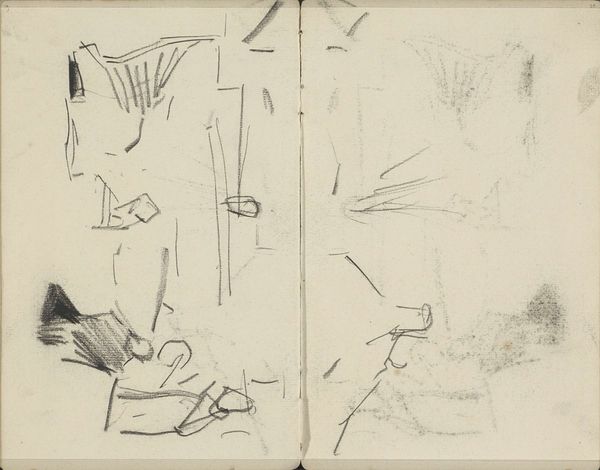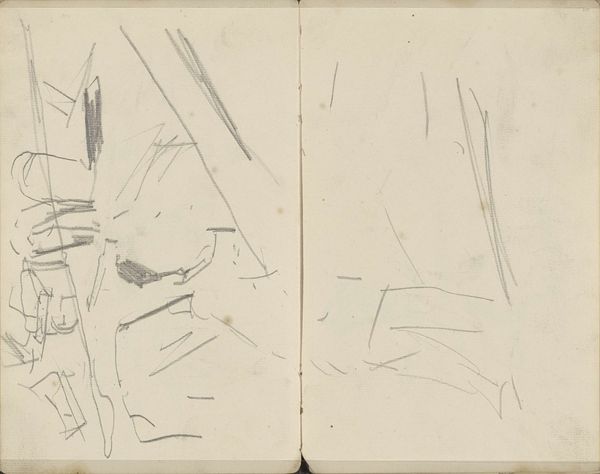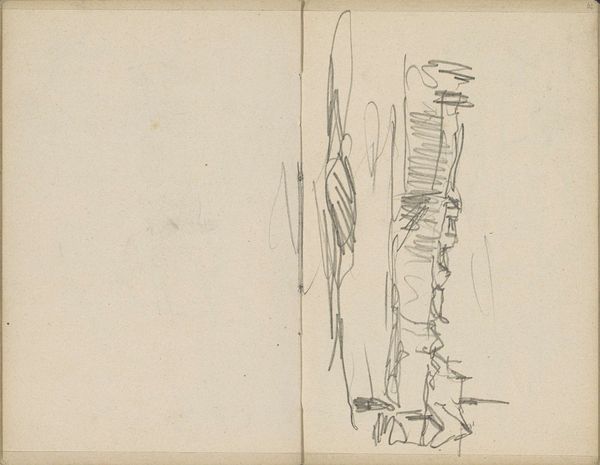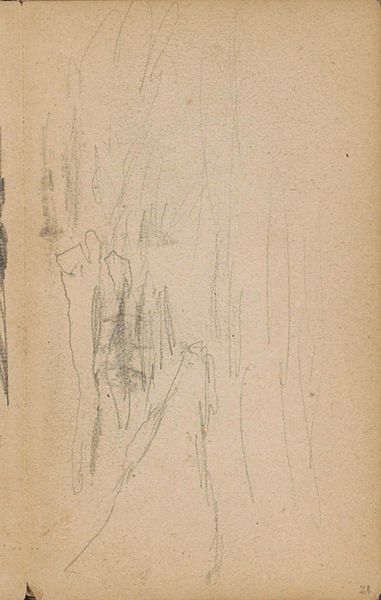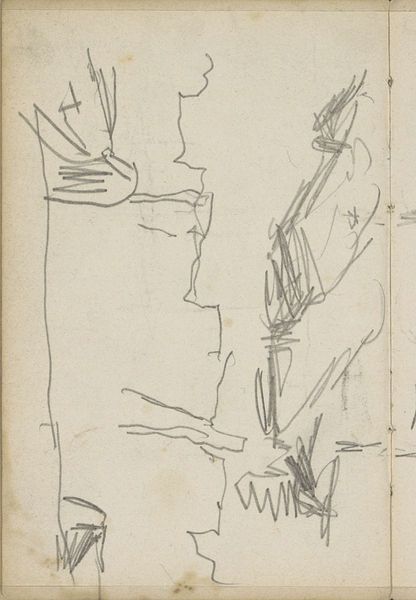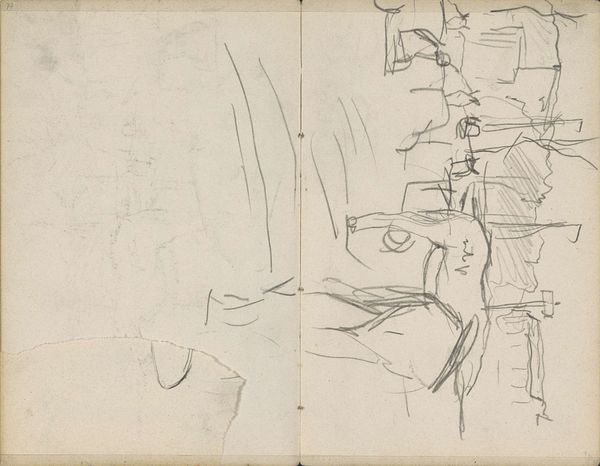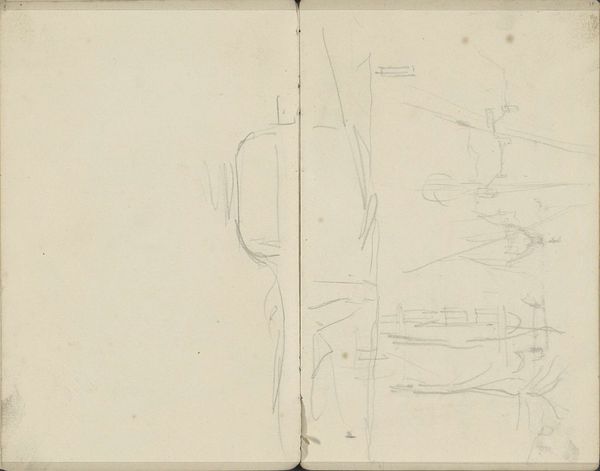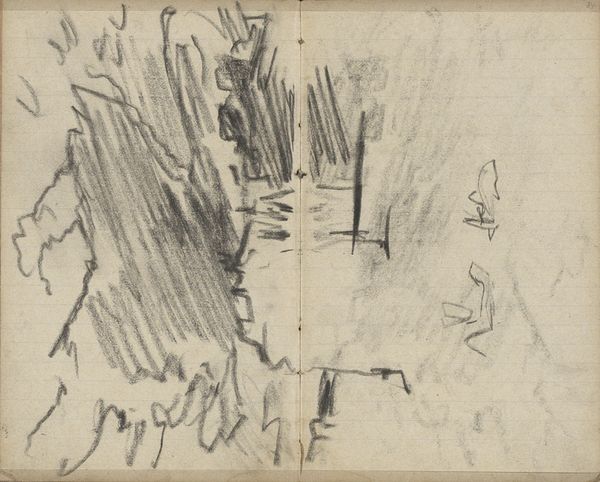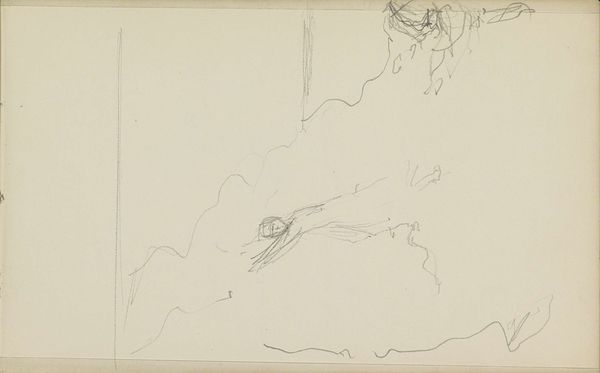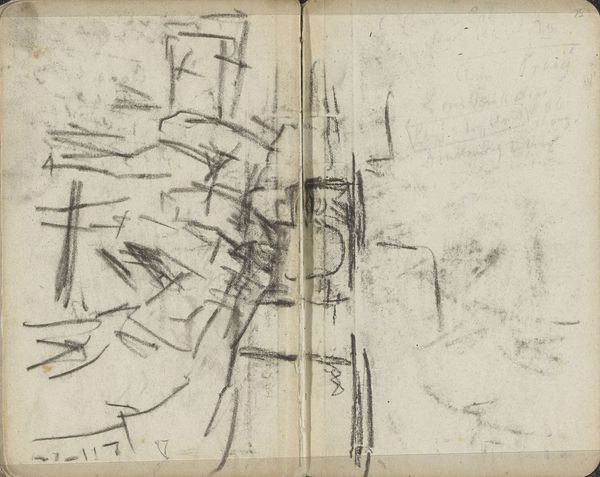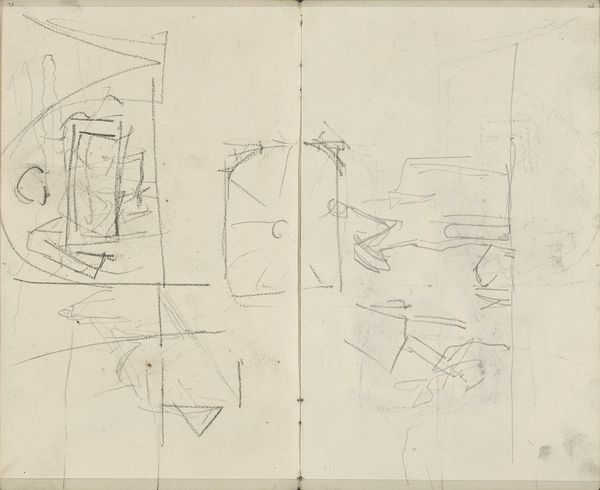
Copyright: Rijks Museum: Open Domain
Curator: Breitner's "View in Amsterdam," sketched in graphite on paper sometime between 1886 and 1923, presents us with... well, a very gestural impression, wouldn’t you say? Editor: Chaotic, almost. My immediate feeling is urban alienation – the lines are fractured, unresolved, as though the city itself is crumbling, or perhaps never fully formed in the first place. Curator: Interesting. Considering Breitner’s milieu, it reflects the societal shifts in Amsterdam. The rapid industrialization and urban expansion during that era dramatically altered the city's social fabric and landscape. Breitner captured these transient scenes, focusing on everyday life often overlooked. Editor: Right, he turned away from the polished portraits favored by his peers. But there is also the tension between capturing "the everyday" and who is visible in that "everyday." Whose experience is documented here? It's a deliberately incomplete record. The viewpoint itself could imply a distance between the observer and what they observe, which could parallel social class dynamics. Curator: Precisely. Breitner’s approach also marked a shift in art's function. Dutch Golden Age focused on idealized, moral narratives. Here, the narrative is muted, implicit. He turns to portraying things as he witnesses in this city, using Impressionistic styles he had picked up from abroad, though his paintings also are described through a realist approach to his subjects. Editor: His loose drawing feels almost proto-cinematic. I am immediately reminded of street photography, capturing fragments of an unposed reality, except with lines of charcoal. There are no frills or romanticism. It suggests the immediacy of lived experiences but then also with so much unsaid. Curator: Agreed. This piece offers a unique glimpse into Breitner’s creative process. In a sense it stands for an honest artistic observation, which Breitner explored a lot. He portrayed his experiences authentically, aligning with emerging modern sensitivities toward direct, unfiltered expression. Editor: In examining art such as this, particularly by focusing on under-recognized or marginalized urban communities and also understanding art within frameworks, we expand discussions. This offers fresh viewpoints of how social and artistic ideas of this era connect, prompting introspection about artistic duty, audience influence, and artistic interpretations of progress. Curator: Indeed. It leaves us pondering on what progress means not just visually but also for communities represented. Editor: Precisely! I will be spending some time processing this piece in that vein, now.
Comments
No comments
Be the first to comment and join the conversation on the ultimate creative platform.

